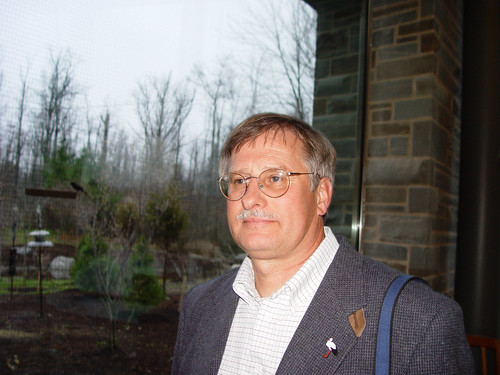Tuesday, March 13, 2018
Daniel Klem coming to Minnesota to speak about the Vikings stadium glass
If I were to put together a list of my biggest heroes in the world—people who have selflessly made the world a better place for human beings and the other beings who share our little planet with us, one name at the very top would be Dr. Daniel Klem. As soon as I moved to Duluth 37 years ago, I started appreciating how horrible the problem of window collisions is for birds, and as soon as I started researching the issue, the author’s name that popped up in virtually every search for information was Dr. Klem’s. The Wilson Bulletin and Journal of Field Ornithology published many of Dr. Klem’s papers, which created the entire foundation of what we know about bird collisions and how to prevent them.
I’ve had the great pleasure of meeting him a couple of times—first in 2004 when I attended a meeting at the Cornell Lab of Ornithology’s brand new facility, and then while I was working at the Lab and drove to Muhlenberg College in Pennsylvania to interview Dr. Klem.
Next week I’ll meet him for a third time, on March 21 in Fridley, Minnesota, when he’ll be speaking at the Springbrook Nature Center on “The Effects of Glass in Buildings on Bird Mortality.” The event is free and open to the public, with a suggested donation of $5. The presentation is sponsored by a coalition of bird conservation groups including Audubon Chapter of Minneapolis, Minnesota Citizens for the Protection of Migratory Birds, and Friends of Roberts Bird Sanctuary.
U.S. Bank Stadium, where the Vikings play, is located along a critical pathway for migratory birds, and so close to the Mississippi River that a great many birds are likely to be nearby in the day as well as lured in to the lighted stadium glass by night.
As soon as the plans for the proposed stadium were released in 2012, with nearly 200,000 square feet of glass—the equivalent of four football fields—ornithologists and wildlife biologists urged the Minnesota Sports Facilities Authority to modify the plans to use less glass, or at the very least to use bird-friendly glass, fritted to make it more visible to birds, like the glass in the Dallas Cowboys’ new stadium. The Authority would not budge.
Minnesota now requires new construction to be “Green”—that is, it must meet LEED standards. (L.E.E.D. stands for Leadership in Energy and Environmental Design.) The glass used in the stadium is extremely energy inefficient, but this new construction got away with it because despite so much opposition, the plans were grandfathered in because they’d been submitted, if not approved, before the green building law took effect.
The glass used in the Dallas stadium is fritted, making it both visible to birds and far, far more energy efficient. It would have added very little to the cost of the US Bank Stadium to simply change the glass, but for some reason our state's sports facilities authority dug its heels in and stuck with the original energy squandering, bird killing design.
And the glass is indeed killing birds. The Audubon Chapter of Minneapolis released a study of bird mortality at the stadium during the fall 2016 migration season that documented a significant number of bird deaths and injuries caused by collisions with the stadium glass.
Dr. Klem will be here to offer recommendations on retrofitting the stadium to make it safer for birds. This will be first in a series of presentations by national bird experts on methods of retrofitting U.S. Bank Stadium. I’ll be there for sure. I just hope people with the power to do something about the stadium at this late date will be listening.

